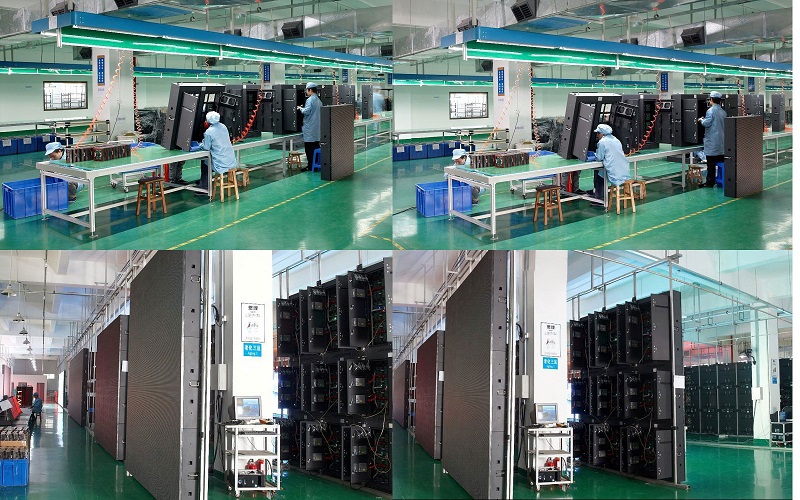CUSTOM SUPPORT & SALE
CUSTOM SUPPORT & SALE
The birth of LED display directly changed the whole world. The emergence of a large screen made us feel brilliant colors, large screens, and high-definition image quality. LED display currently accounts for 80% of the outdoor market. LED display performance is closely related to the LED Display driver chip.

1. Driver chip type:
LED driver chips can be divided into two kinds of general-purpose chips and special chips. The so-called universal chip, the chip itself is not designed specifically for the LED, but some logic chips with LED display part logic functions (such as string-and-shift registers). The dedicated chip refers to a driver chip designed specifically for LED display in accordance with the LED light emission characteristics. LED is a current characteristics device, that is, under the premise of saturation conduction, its brightness changes with the change of the current, rather than by adjusting the voltage across it. Therefore, one of the biggest characteristics of a dedicated chip is to provide a constant current source. The constant current source can ensure the stable driving of the LED and eliminate the flickering phenomenon of the LED, which is a prerequisite for the LED display to display a high-quality picture. Some special chips also add some special features such as brightness adjustment, error detection, etc. to the requirements of different industries. This article will focus on the dedicated driver chip.
2. Universal chip
General-purpose chips are generally used in low-end products of LED displays, such as indoor monochrome screens, and dual-color screens. The most commonly used universal chip is the 74HC595. The 74HC595 has 8-bit latches, serial-parallel shift registers, and tri-state outputs. Each circuit can output a maximum of 35mA (non-constant current). General IC manufacturers can produce such chips. In the display industry, manufacturers such as Motorola (Onsemi), Philips, and ST are commonly used, among which Motorola's products perform well.
3. Special chip
The dedicated chip has the characteristics of large output current, constant current, etc., and is suitable for occasions with large current and high image quality requirements, such as outdoor full-color screens, indoor full-color screens, and the like.
The key performance parameters of a dedicated chip are the maximum output current, the number of constant current source output channels, the current output error (bit-bit, chip-chip), and the data shift clock.
4. Maximum output current
At present, the maximum output current of a mainstream constant current source chip is defined as a single maximum output current, which is generally about 90 mA. Constant current is the most fundamental characteristic of a dedicated chip, and it is also the basis for high picture quality. It is more meaningful for the display screen to output the constant current maximum value (ie, the maximum constant output current) at the same time for each channel, because in the white balance state, it is required that each channel output the constant current at the same time. The maximum constant current output current is generally less than the maximum allowable output current.
5. Constant current source output
The number of constant current source output channels is mainly 8 (8-bit source) and 16 (16-bit source). The 16-bit source is basically the mainstream, such as the TLC5921, TB62706/TB62726, and MBl5026/MBl5016. The main advantage of the 16-bit source chip is that it reduces the chip size and facilitates the wiring of the LED driver board (PCB), especially for PCBs with a small dot pitch.
6. Current output error
Current output error is divided into two types, one is the current error between bits, that is, the error between each output of the same chip; the other is the current error between the chips, that is, the error of the output current between different chips. The current output error is a critical parameter and has a great influence on the uniformity of the display. The greater the error, the poorer the uniformity of the LED display, it is difficult to achieve a white balance screen. At present, the inter-bit current error of the mainstream constant current source chip is generally less than 6% of soil, and the inter-chip current error is less than -+15%.
7. Data shift clock
The basic functions of the LED display driver chip all include the function of a serial shift register, so as to facilitate the cascade and transmission of display data, and to construct a large-size led display screen with multiple display points. The data shift clock determines the transmission speed of the display data and plays a crucial role in the display data update rate. As a large-sized display device, the display refresh rate should be above 85 Hz to ensure a stable picture (no scanning flicker). A higher data shift clock is the basis for the display to obtain a high refresh rate picture. At present, the mainstream constant current source chip shift clock frequency is generally above 15 MHz.
The constant current of the LED chip is the basic prerequisite for ensuring the color stability of the LED display. The high-precision constant current source is an excellent picture quality of the display screen.
Contact us to learn more about LED display Screen now.
Why Choose Colorlight LED To Be Your Partner ? 12 Years Experience on Led Display Screen Manufacturing. Excellent after-sale service to meet your standards of excellence. 3 Years High Quality Warranty provided. 5% Spare Parts for Your Order Replacement. Convenient online Store (www.ledinthebox.com) for you to order LED display parts with best Price and fast DHL shipping. High Quality With Global Standards,CE EMC-B,RoHs,FCC,UL Certificated.


Contact: Lee
Phone: +86-132-6566-7728
E-mail: info@colorlitled.com
Add: Tangtou Industrial Park,Shiyan,Baoan,Shenzhen